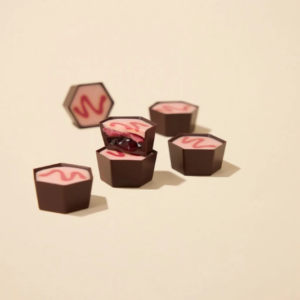The rapid rise of cocoa alternatives continues apace

The management team of Planet A cocoa-free chocolate. Pic: Planet A
The move just confirmed by major chocolate firm Barry Callebaut to partner with the Planet A alternative cocoa ingredient business is a deal that could potentially have major implications for the wider sector.
Though the fast-rising German start-up venture that has not yet attained its fifth birthday had recently shown key development with multi-million scale-up funding, the venture with the Swiss headquartered chocolate business elevates it to a whole new level.
The processing and R&D facilities available to Barry Callebaut stand among the very strongest in the business, with its global distribution channels opening up a wealth of new markets and territories for Planet A (pictured), which utilises sunflower and oats for its base ingredients.
While the value of the deal has not been stated, it appears clear that there will be a close relationship in terms of bringing existing and new products into commercial realisation that are anticipated to have significant gamechanging capacity for the industry.
What does this mean for Barry Callebaut itself? Well, as reported recently by our title, the company has experienced particular financial headwinds from escalating cocoa prices that prompted it to consider how it managed its overall portfolio of offerings – including forging a link with Zurich University into how cocoa alternatives could be brought to market.
Planet A is in fact already there with a ready-to-go solution that clearly impressed the management of Barry Callebaut, enough to invest in the business through a joint venture that represents a considerable departure from the group’s previous sole focus.
Indeed, it has now been exactly three years since the business unveiled its Second Generation chocolate at a global launch in Venice, for what it billed as being the ultimate in sustainable confectionery, involving producing high grade bar ranges in South America that were billed as being the next great evolution in the category.
What happened next is hard to fathom, as from speaking to people close to the business, and indeed from within it, we were led to believe that the Second Generation Chocolate was “just resting on a backburner” – but on the evidence of its apparent failure to unfortunately materialise, it can only be logical to surmise that it’s an ambitious venture whose window of opportunity has now been lost, given the turbulence within global cocoa prices that has now engulfed the industry in the past 18 months.
While there thankfully seems to be some respite from those higher prices – which were more than three time the rate of around $3,000 a tonne being attained just two years ago, there appears to be much uncertainty that still clouds the sector, from a climate impact, and policy perspective with regards to the EUDR and due diligence regulations that look likely to now finally be coming into force from the end of this year – which is still not a done deal int he European Parliament.
So what of our cocoa alternatives? They’re of course quite some technical achievement in themselves, with Planet A’s Choviva brand gaining an accolade at our World Confectionery Conference last year for its genuinely impressive sustainability credentials.
There may of course be some scepticism from some quarters as to whether such alternatives will negatively impact on traditional cocoa markets – but the fact that there remains such a general upturn in demand for this key ingredient (even if that is presently relatively patchy around the globe), that it’s hard to envisage a world where people don’t enjoy their cocoa-based confectionery, or beverages that stem from this remarkable crop.
The fact that we now have viable alternatives is an intriguing factor, that if managed carefully, is something that can augment an existing sector that has faced more than its fair share of supply volume challenges in recent times, so this has to be a welcome development, so long as traditional cocoa communities remain a significant area of focus for the industry as well as its ‘new kids on the block.’
Neill Barston, editor, Confectionery Production magazine
- Keep in touch at [email protected] or via social media @confectionprod and our Linkedin pages






